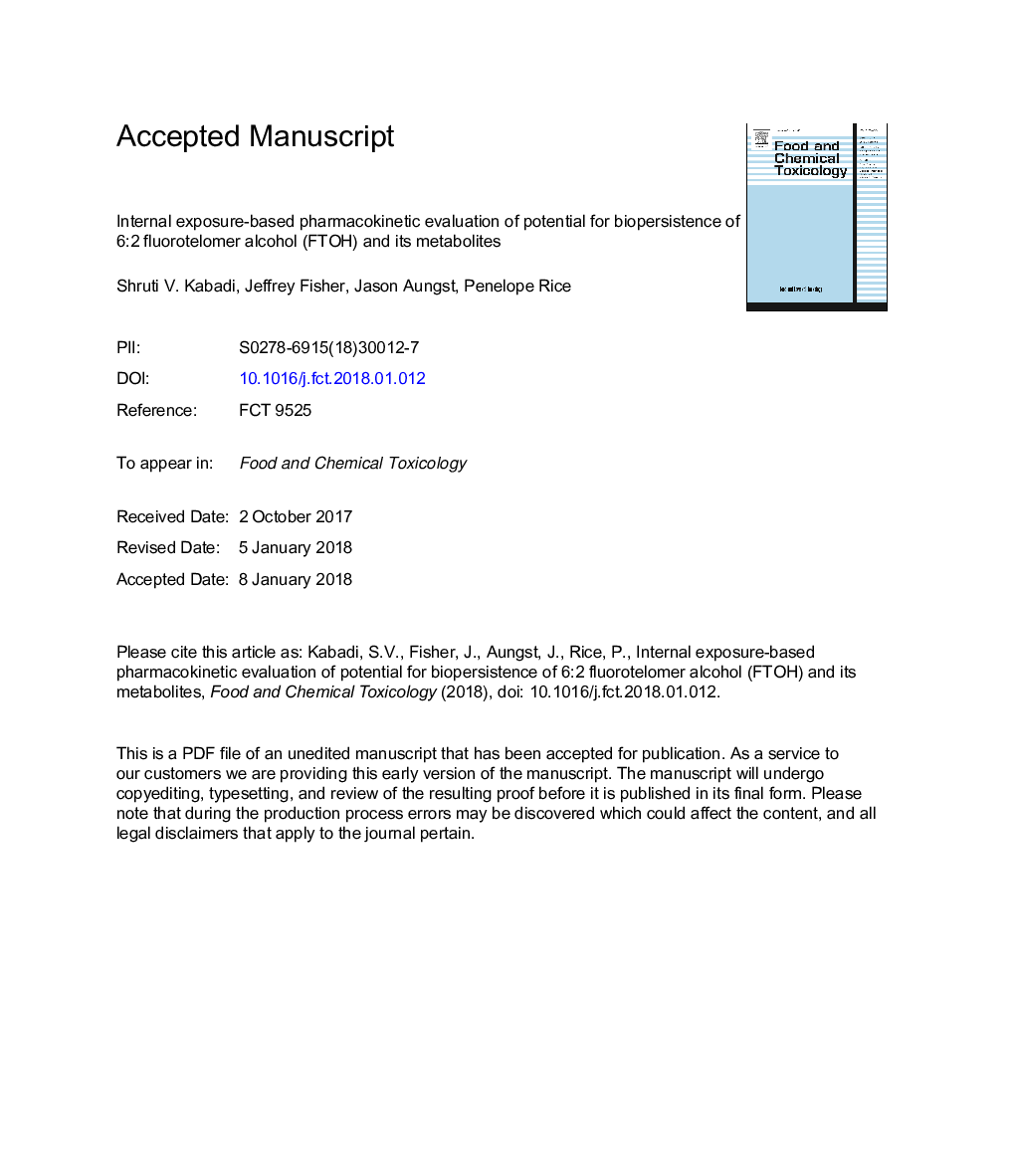| Article ID | Journal | Published Year | Pages | File Type |
|---|---|---|---|---|
| 8548403 | Food and Chemical Toxicology | 2018 | 33 Pages |
Abstract
Polyfluorinated compounds (PFCs) are authorized for use as greaseproofing agents in food contact paper. As C8-PFCs (8-carbons) are known to accumulate in tissues, shorter-chain C6-PFCs (6-carbons) have replaced C8-PFCs in many food contact applications. However, the potential of C6-PFCs for human biopersistence has not been fully evaluated. For the first time, we provide internal exposure estimates to key metabolites of 6:2 fluorotelomer alcohol (6:2 FTOH), a monomeric component of C6-PFCs, to extend our understanding of exposure beyond estimates of external exposure. Pharmacokinetic data from published rat and human studies on 6:2 FTOH were used to estimate clearance and area under the curve (AUC) for its metabolites: 5:3 fluorotelomer carboxylic acid (5:3 A), perfluorohexanoic acid (PFHxA) and perfluoroheptanoic acid (PFHpA). Internal exposure to 5:3 A was the highest of evaluated metabolites across species and it had the slowest clearance. Additionally, 5:3 A clearance decreased with increasing 6:2 FTOH exposure. Our analysis provides insight into association of increased internal 5:3 A exposure with high biopersistence potential of 6:2 FTOH. Our results identify 5:3 A as an important biomarker of internal 6:2 FTOH exposure for use in biomonitoring studies, and are potentially useful for toxicological assessment of chronic dietary 6:2 FTOH exposure.
Keywords
Related Topics
Life Sciences
Agricultural and Biological Sciences
Food Science
Authors
Shruti V. Kabadi, Jeffrey Fisher, Jason Aungst, Penelope Rice,
